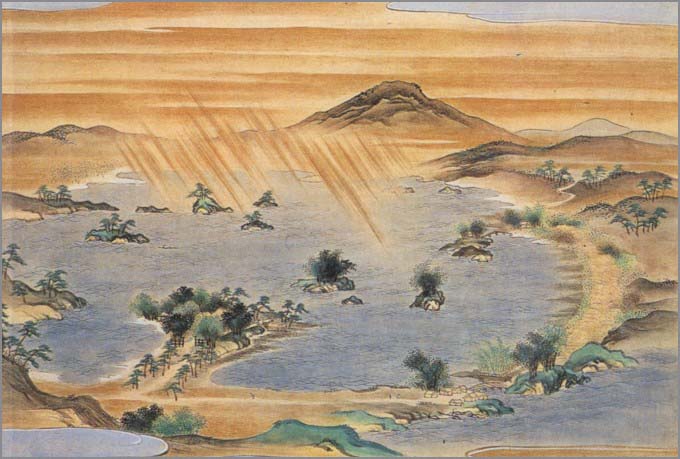鴬や餅に糞する縁の先
uguisu ya mochi ni fun suru en no saki[1]
the uguisu
pooping on the rice cakes
on the veranda
—Bashō[2]

The Uguisu is the herald of spring in Japan. It’s not often seen, but everyone knows its wonderful cry, which we all wait all winter to hear. The standard English translation is “Bush warbler” or sometimes “Japanese Nightingale”, so insert either of those if you want instead of the Japanese name.
Rice cakes (mochi) were usually left on the veranda to dry. In this case, seems like the uguisu mistook the drying mochi for a toilet.
Bashō considered this haiku to be one of his first successful uses of his new style, karumi (“lightness”), which would be his final philosophy of haiku writing. Karumi basically proposed to focus on the mundane aspects of everyday life while avoiding the more serious topics of classic Japanese and Chinese poetry. He was very much influenced in karumi by his Buddhist practice, which teaches that we should embrace the world rather than feel we are separate from it.
The contrast between the uguisu, which we are usually happy to see and hear, and pooping on the food, may seem strange and shocking and not at all a topic for a poem, but it shows Bashō trying to capture reality as it is without judgement and illustrates the power of haiku, which can give us these little scenes of real life in a way that few other poetry forms can. In addition to being an example of his latest haiku philosophy, we might imagine Bashō found some humor in the situation and that is what triggered the haiku.
Some trivia for you: Uguisu poop was actually used as a ingredient in skin whitening creams and to remove wrinkles. It is also used to remove stains from kimono. That in mind, maybe after writing this haiku Bashō scraped the poop off the mochi and kept it to later sell.



